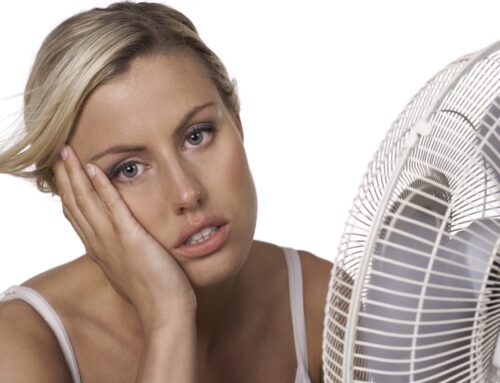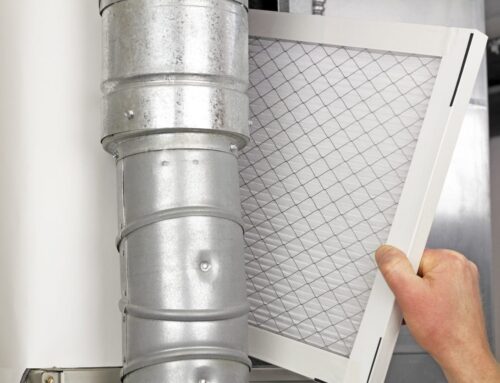
If your home is air-tight and energy-efficient, it may need more fresh air. An energy-recovery ventilator is one way get it without sacrificing efficiency.
Sealing air leaks and adding insulation are two important ways of conserving energy in your house. But some homes may be so tightly sealed that they don’t allow in enough fresh air for a healthy environment. To allow adequate fresh air into your house (without using extra energy to heat or cool the fresh air) you might need some type of ventilation system. Energy-recovery ventilators, also known as air heat exchangers, are mechanical ventilation systems that remove stale, polluted air from homes and replace it with fresh outdoor air.
To conserve energy, energy-recovery ventilators pass the outgoing warm air from inside the house through an internal component called a heat exchanger. In the heat exchanger, heat from the outgoing air is transferred to the cool incoming air. This exchange (heat recovery) prevents the home’s occupants from being blasted with cold winter air. It also saves considerable energy because the home’s heater doesn’t need to warm the cold incoming air. In the summer, outgoing room air cools the incoming warm air, helping to maintain comfort.
Energy-recovery ventilators can be operated by timers or controlled by humidistats, sensors that detect humidity levels in a home. Energy-recovery ventilators often remove excess humidity but also can be set to add humidity. They cost about $500 to $1,700 (see “What Will It Cost?”, below).
When researching energy-recovery ventilators for purchase, don’t be confused by the terminology. An energy-recovery ventilator is not the same as a heat-recovery ventilator. In an energy-recovery ventilator, the heat exchanger transfers a certain amount of water vapor — along with heat energy — to the incoming air. A heat-recovery ventilator transfers only heat. Because an energy-recovery ventilator transfers some of the moisture contained in the exhaust air to the usually less humid incoming winter air, the humidity of homes with energy-recovery ventilators tends to stay more constant. This feature also keeps the heat exchanger core warmer, minimizing problems with freezing.
Installing an Energy-Recovery Ventilator
Although you can purchase a small wall- or window-mounted energy-recovery ventilator, most are large units that are suspended from the ceiling — usually in attics, utility rooms, basements, or crawl spaces.
Installation is a job for a professional. Energy-recovery ventilators require two connections to the outdoors — one to exhaust stale indoor air and the other to bring in fresh outside air. According to the Sustainable Building Sourcebook, “The inlet and outlet on the building exterior need to be distanced from each other to avoid cross-contamination.” Ideally, they should be located on different sides of the house.
If your home has a central heating and air-conditioning system, an energy-recovery ventilator can be integrated into existing ducts to remove stale indoor air and circulate fresh air to each room. If your home is not equipped with a central air or a forced-air heating system, installation can be considerably more challenging. The installer may need to build chases (channels to transport air) or install ducts to deliver stale air to the energy-recovery ventilator for removal and to distribute fresh air throughout the home.
A cheaper alternative is to have the energy-recovery ventilator ducted to one central spot in the house. For optimal performance, stale air is usually removed from the most humid locations in our homes, such as kitchens and bathrooms.
Benefits of Ventilation
Some type of ventilation is essential for airtight homes. If your home is new and airtight, or if you’ve spent time and money sealing air leaks in the building envelope, an energy-recovery ventilator may be useful.
How do you know whether an energy-recovery ventilator is suitable for your home? One way is to have a blower door test performed as part of an energy audit. If the air exchange calculated from this analysis is 0.5 air changes per hour (ACH) or less, an energy-recovery ventilator is probably a good idea. Another way to determine if installing an energy-recovery ventilator is worthwhile is to assess how long odors linger in your home. The longer an odor lingers, the more airtight a home is. The more airtight, the more essential it is to create a supply of fresh air.
Installing an energy-recovery ventilator may also be advisable in a house in which the heating and/or cooking equipment is not adequately ventilated — for instance, if there’s no hood over the gas range or if the stove does not vent to the outside. An energy-recovery ventilator may also make sense if your garage is attached to the house and is not adequately vented, a common situation in some older homes that can result in car exhaust fumes entering your home. (To address this, you can also install a simple exhaust fan that is automatically or manually controlled in the garage.)
Installing energy-recovery ventilators may be advised if household chemicals and paints are stored indoors (or in an attached garage or basement) and, of course, if formaldehyde levels are high. Formaldehyde is present in many common household materials, including furniture, kitchen cabinets, some types of flooring, and some window treatments. Energy-recovery ventilators are also a good idea if radon levels are high. Note, however, if radon levels are 15 pCi/liter (picocuries per liter) or higher, an energy-recovery ventilator will not generally be adequate to reduce radon sufficiently.
What to Watch Out For
Energy-recovery ventilators work best if there’s a supply and return duct for each bedroom and for all common living areas, such as family rooms and kitchens. For optimal performance, duct runs should be as short and straight as possible. Duct size is important to allow air to flow freely through the system.
If you live in a cold climate, choose an energy-recovery ventilator equipped with a device to prevent freezing and frost formation. Frost forms as cold supply air (incoming) flows through the heat exchanger. Frost buildup reduces the system’s efficiency and can damage the unit.
Energy-recovery ventilators need to be cleaned periodically to ensure adequate performance and to prevent the build-up of mold and bacteria in the heat exchanger. It’s good to have a professional service the unit annually.
Homeowners can perform other maintenance, such as cleaning or replacing filters every couple of months and cleaning outside screens and drains. Check the ventilator’s manual for instructions.
For the rest of this article, please go to motherearthnews.com. If you have further questions as to whether your home would benefit from one of these ventilators, be sure to contact us so that we can help you make that determination as well as help you choose the right unit for your home.
Sealing air leaks[/vc_column_text][/vc_column][/vc_row]
Save More, Stay Informed!
Sign up for our newsletter and be the first to receive:
✅ Exclusive Sales & Rebates on Mitsubishi Heat Pumps.
✅ Industry News and Expert HVAC Tips.
✅ Updates That Help You Save Energy and Money.





